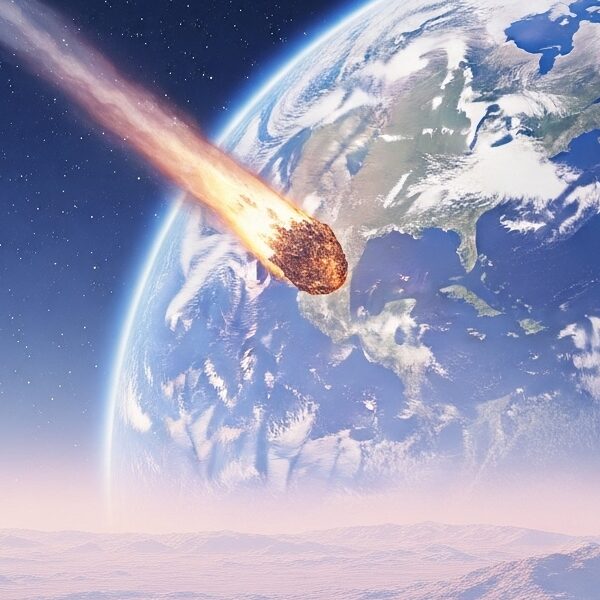Calculating Stars Sci-Fi
When the Sky Falls, We Reach for the Stars
The Stellar Ascent: An Introduction to The Calculating Stars
- The Stellar Ascent: An Introduction to The Calculating Stars
- The Allure of the Uncharted: Why Calculating Stars Sci-Fi Shines
- Themes in The Calculating Stars: Women, STEM, and Survival
- The Cosmos as a Mirror: Comparing Sci-Fi Themes
- Cosmic Philosophy: Applying Grand Ideas to Daily Life
- Behind the Scenes: Organisations Shaping Our Future
- Glimpses of Tomorrow: The Latest in Stellar Endeavours
- A Personal Reflection: Reaching for What’s Possible
My dears, imagine a world where the space race took a rather different turn. Not out of Cold War rivalry, but out of sheer, unadulterated necessity. Mary Robinette Kowal, with her exquisite novel The Calculating Stars, presents us with just such a scenario. It’s 1952, a rather pivotal year in our own history, but in this alternate timeline, a meteorite strike devastatingly impacts the Eastern Seaboard of the United States, irrevocably altering Earth’s climate and setting humanity on an urgent, terrifying, yet ultimately hopeful path towards the cosmos.
This isn’t just a tale of scientific endeavour, though there’s plenty of that to marvel at. No, it’s a profound exploration of human resilience, the indomitable spirit of those who dare to dream beyond the confines of a wounded Earth, and indeed, the very real struggles faced by remarkable individuals, particularly women, in a society grappling with its own biases even as it gazes towards the stars. One might even say, with a touch of dramatic flair, “No Space, No Life.” for the sheer desperation and urgency that propels humanity outwards.
The Allure of the Uncharted: Why Calculating Stars Sci-Fi Shines
Oh, where to begin with the charms of The Calculating Stars? Its allure, I find, lies not merely in its clever alternate history premise, but in its meticulous attention to detail and its deeply human heart. Kowal, with her background in aerospace, infuses the narrative with an authenticity that makes the science and the engineering feel utterly believable, even thrilling. One truly feels the cramped confines of the early space capsules, the intense pressure of a launch, and the terrifying beauty of Earth seen from above.
But beyond the rivets and rocket fuel, it’s the characters who truly elevate this novel. Dr. Elma York, our intrepid protagonist, is a force to be reckoned with: a brilliant mathematician and former WWII pilot, now longing to be an astronaut. Her journey, fraught with societal prejudice and personal doubt, is utterly captivating. It’s a gentle reminder that true heroism often lies not in grand gestures, but in persistent, quiet determination against a backdrop of immense challenge. The wit and wisdom woven into the narrative are simply delightful, offering moments of levity amidst the gravitas.

Themes in The Calculating Stars: Women, STEM, and Survival
Beneath the thrilling veneer of the space race, The Calculating Stars offers a rich tapestry of themes for us to ponder. At its core, it’s a powerful narrative about gender equality and the breaking of barriers. Elma and her fellow “Lady Astronauts” face systemic sexism, being told their very biology precludes them from space travel. The novel unflinchingly portrays the frustrating, often infuriating, microaggressions and overt discrimination they endure. Yet, it also celebrates their unwavering resolve and the camaraderie that blossoms among them as they fight for their rightful place among the stars. It serves as a poignant reminder that even in humanity’s greatest hour of need, our petty prejudices can still hold us back – a rather sobering thought, wouldn’t you agree?
Furthermore, the story beautifully explores the concept of hope in the face of despair. The initial meteor strike is an apocalyptic event, yet humanity responds not with resignation, but with an astonishing, collective will to survive and thrive, even if it means leaving their home planet behind. It speaks to a profound human capacity for adaptation and innovation, reminding us that even from the ashes of disaster, new beginnings can emerge.

The Cosmos as a Mirror: Comparing Sci-Fi Themes
When we look at The Calculating Stars, it certainly offers a compelling lens through which to compare various SF themes. Unlike more dystopian narratives, this novel offers a surprisingly optimistic take on humanity’s response to catastrophe. Instead of succumbing to chaos, society organises, albeit imperfectly, around a shared goal of survival. This contrasts sharply with, say, the bleak futures often depicted in post-apocalyptic fiction, where humanity frequently devolves into tribalism.
Moreover, the emphasis on grounded, plausible science, despite the alternate history, places it firmly in the “hard science fiction” camp, reminiscent of Arthur C. Clarke’s works where the technology, while advanced, feels within reach. Yet, it marries this scientific rigor with a deeply human story of overcoming social injustice, making it a richer, more emotionally resonant experience than some purely technological narratives. It beautifully blends the ‘sense of wonder’ with a keen sense of social commentary, making it a truly layered piece of work. For another excellent example of alternate history with a compelling social commentary, one might explore works like The Yiddish Policemen’s Union.

Cosmic Philosophy: Applying Grand Ideas to Daily Life
Now, you might think a story about space travel and global catastrophe has little to do with our mundane daily lives. But I beg to differ! The Calculating Stars, particularly through Elma’s journey, offers some profound philosophical insights that are surprisingly applicable.
Elma’s relentless pursuit of her dream, despite the constant setbacks and societal pushback, is a powerful lesson in perseverance. It reminds us that our own ‘space race’ – be it a career goal, a personal ambition, or simply navigating daily challenges – often requires an unshakeable belief in ourselves and a refusal to let others define our limitations. Her use of mental calculations and focus to manage anxiety in high-pressure situations is also a subtle nod to mindfulness – perhaps a less dramatic, but equally vital, journey of self-discovery that we can all embark on. It really does make one think about one’s own ‘calculating stars,’ doesn’t it?
Behind the Scenes: Organisations Shaping Our Future
While The Calculating Stars is a fictional work, it subtly highlights the real-world organisations and concepts that underpin such ambitious endeavours. Of course, the novel’s ‘International Aerospace Coalition’ and ‘Earth First’ movements are fictional constructs, but they draw clear parallels to historical entities like NASA and various environmental and social advocacy groups. The book reminds us that grand projects like space exploration aren’t just about rockets and astronauts; they’re about the immense logistical, political, and social machinery required to make them happen. It’s a testament to human ingenuity, but also to the complex interplay of human will and established structures.

Glimpses of Tomorrow: The Latest in Stellar Endeavours
Given the themes of The Calculating Stars, one cannot help but ponder the latest developments in space exploration and the role of AI. We are, after all, in an era where private companies are increasingly joining the ranks of national space agencies, pushing the boundaries of what’s possible. From reusable rockets to ambitious plans for lunar bases and Martian colonies, the dreams depicted in Kowal’s novel are perhaps not so far-fetched after all.
And AI? Well, AI is becoming an indispensable tool in everything from mission planning to data analysis, making complex calculations and simulations possible at speeds unimaginable in Elma York’s time. It’s a fascinating contrast, isn’t it, between Elma’s impressive mental computing and the vast capabilities of modern AI? One can only imagine what the “computers” in The Calculating Stars (who, rather charmingly, were largely human women) could have achieved with today’s computational power! It’s a fascinating convergence of humanity’s enduring desire to explore and the ever-advancing technological means to do so.

A Personal Reflection: Reaching for What’s Possible
And so, my dear readers, as we bring our little exploration of The Calculating Stars to a close, I must offer a few personal thoughts. This novel is more than just a captivating read; it’s a poignant reminder that the greatest barriers we face are often not physical, but societal and self-imposed. It celebrates the quiet courage of those who defy expectations and the sheer power of collective human endeavour.
For anyone who loves a good story, who believes in the boundless potential of humanity, or who simply enjoys a perfectly crafted piece of alternate history, I wholeheartedly recommend you pick up The Calculating Stars. It will make you look up at the night sky with renewed wonder, and perhaps, just perhaps, it will inspire you to reach for your own stars, no matter how distant they may seem. After all, what is life without a little cosmic aspiration?
The Calculating Stars by Mary Robinette Kowal
Related Articles
-
SF Novel Masterpiece Collection: No Murderbot, No Life. Network Effect by Martha Wells

Network Effect Novel: No Murderbot, No Life. Delve into Martha Wells’ award-winning sci-fi masterpiece, exploring AI, corporate intrigue, and the unforgettable SecUnit.
-
No LIFE, No CAT. mindfulness: Finding Peace in the Paradox: Mindfulness Woven by AI’s “Efficiency” and Human “Imperfection” 5th

AI & Human Mindfulness: Explore how AI’s efficiency and human imperfection can guide you towards a mindful, richer life. Learn practical tips for digital wellbeing and slow living.
-
Masterpiece Collection: Illuminating Life’s Depths – Jenseits von Gut und Böse by Friedrich Nietzsche

No Books, No Life: Dive into illuminating masterpieces like Nietzsche’s “Jenseits von Gut und Böse” to spark self-discovery and intellectual curiosity.






Leave a Reply